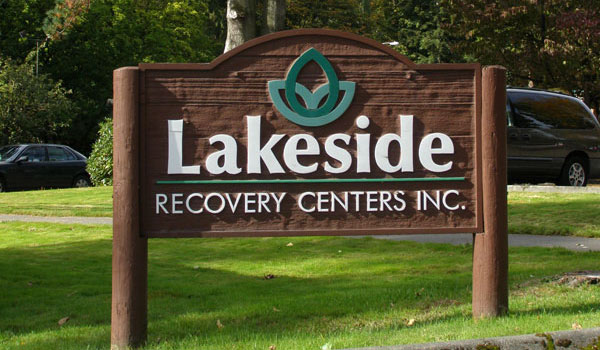Few experiences are more frightening than finding drugs in your own home. Whether your teen has gotten in with the wrong crowd or your spouse is concealing substance abuse, you probably have countless questions.
“I found drugs in my home – what do I do?”
“Should I call the police?”
“Is my son addicted to cocaine?”
Try not to panic. In this article, we will help you to work through the correct course of action that you should follow after you find drugs in your home.
Common Hiding Places for Drugs
Whether they’re hiding meth, heroin, or prescription pills, people who have developed a substance use disorder can be very creative. They may rip open mattresses, hollow out books, or use air vents to disguise their stash. In spite of this ingenuity, there are a few common places that you are likely to stumble across drugs or paraphernalia in the home.
- Mattresses and box springs
- Hollow appliances
- Taped inside furniture, especially dressers
- Inside removable ceiling tiles
- Within unused shoes or jacket pockets
- Disposable items like soda cans or water bottles
- Inside their car
- Low-traffic areas of the house, like the basement or garage
Many people who find drugs in their child’s room or spouse’s belongings are not looking for them – they stumble across pills or powders while straightening up. For example, you may find marijuana in your teen daughter’s pants pocket while doing the wash, see several broken pens scattered around your spouse’s office, or notice a rolled-up dollar bill in your wife’s toiletry bag. Before you confront them, it is important to understand what is going on.
Understanding What You’ve Found
Many Americans don’t know exactly what each type of drug looks like. They might discover a small baggie filled with a brown powder and find themselves at a loss for what to do next. Here are visual identifiers for each of the most common illicit drugs.
Cocaine
A white, crystalline powder visually similar to powdered sugar. Crack cocaine comes in the form of small crystals that may range in color from clear to white to yellow.
LSD
While it is sometimes sold in tablet or capsule form, LSD (acid) is often added to absorbent paper. You may have found very small squares of paper which sometimes have designs printed on them.
MDMA
When MDMA is made, it comes in the form of white or gray crystals. When it is pressed into pills, it is referred to as ecstasy. These pills are often colorful and may have designs stamped onto them.
Meth
Meth is another crystalline drug which often is sold in large chunks (crystal meth) or in powder form. The shards of meth that flake off will look like glass. This drug may be a variety of colors – strawberry quick meth, for example, is pink – but is most often white, yellow, gray, or brown.
Heroin
When it is pure, heroin is a fine, white powder. However, these drugs are most often sold as a dull, brownish powder – a discoloration caused by the additives used to dilute it.
Benzodiazepines, Opioid Painkillers, Barbiturates, and Other Prescription Pills
These legal medications are commonly misused by those who do not have a prescription. You can use a pill identification tool like this one from RxList. Simply input the letters or numbers stamped into the pill to determine exactly which substance your spouse or child is using. Commonly abused pills include:
- Adderall – a round, blue pill with stamps saying AD and 10
- Dilaudid – round or triangular pills that may be orange, yellow, or white with the manufacturer’s name stamped on them
- Xanax – oval-shaped tablets that may be white, peach, or blue with XANAX and the dosage stamped on them
- Vicodin – white, oblong pills with the strength and manufacturer’s name stamped each side
Paraphernalia
If your loved one is involved with illegal drugs, you will probably also find accompanying paraphernalia in the same spot. In some cases, you may stumble across these things before you know for sure that they are using drugs. Be on the lookout for the following items:
- If they are inhaling drugs, you may find glass pipes, tin foil, masking tape, or metal pipes.
- If they are snorting drugs, you might see mirrors, lighters, razor blades, small spoons, rolled-up dollar bills, or short plastic straws.
- If they are injecting drugs, there will be needles and syringes, belts or other tourniquets, usually found within a small “kit.”
What to Do If You Find Drugs in Your Home
Once you have determined which substances and paraphernalia items are in your home, it is time to take action. Your next step should be to contact a knowledgeable third party, such as an addiction treatment center or free hotline. This is an excellent way to gain more information about substance abuse, treatment options, and more.
Next, it’s time to confront your family member. While you are probably feeling a wide range of emotions, try to avoid expressing judgement, raising your voice, or demanding an explanation. Instead, explain what happened and offer them the chance to take part in an open discussion.
It’s fully possible that your spouse or child will deny that the drugs are theirs. Avoid letting them divert the conversation; instead, explain the consequences of this discovery and what you expect of them in the future. If this conversation does not go well, don’t be discouraged – professional intervention services are available.
If your loved one has developed a problem with drugs, they may need comprehensive treatment. Recovery resources include inpatient or residential programs, outpatient therapies, 12-Step meetings, case management, and relapse prevention. With the appropriate treatment, you can help your loved one to break the cycle of addiction.
Help for Addiction in Washington State
At Lakeside-Milam, we understand how you’re feeling. Over the years, we’ve helped more than 100,000 people (and their families) to find lasting sobriety. If you have found drugs in your spouse or child’s belongings, help is available. Contact us today for more information about intervention, treatment, and recovery.






